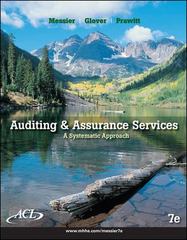Question
PREMIER SPORTS MEMORABILIA (NETWORKED COMPUTER SYSTEM WITH MANUAL PROCEDURES) (Prepared by Chris Polchinski, Lehigh University) Premier Sports Memorabilia is a medium-sized, rapidly growing online and
PREMIER SPORTS MEMORABILIA (NETWORKED COMPUTER SYSTEM WITH MANUAL PROCEDURES) (Prepared by Chris Polchinski, Lehigh University)
Premier Sports Memorabilia is a medium-sized, rapidly growing online and catalogue-based retailer centered in Brooklyn, New York. The company was founded in 1990 and specializes in providing its customers with authentic yet affordable sports memorabilia from their favorite players and teams, past and present. Traditionally the companys customers were located in the northeast region of the United States. Recently, however, Premier launched a successful ad campaign to expand its customer base.
This has increased sales, which has in turn placed a strain on the organizations operational resources. The company currently employs 205 employees who are spread out among its three warehouses and two offices in the tri-state area. The firm purchases from a large number of manufacturers and memorabilia dealers around the country and is always looking for additional contacts that have new or rare items to offer. The company has a computer network installed, which, until recently, has served it well. The firm is now, however, experiencing operational inefficiencies and accounting errors. Your firm has been hired to evaluate Premiers business processes and internal controls. The revenue cycle is described in the following paragraphs.
Revenue Cycle Procedures Premiers revenue process is initiated when a customer places an order either online, by mail, or through a telephone representative. The order is then manually entered into the computer system for mail or telephone orders, while online orders are automatically entered upon arrival. When the customer order is entered, the system automatically performs an online credit check. If credit is approved, the sales process continues. If credit is denied, the process ends, and the customer is notified of the automatic rejection. For approved orders, the clerk manually prepares four hard copies of each sales order. The clerk then enters the sale into the digital sales journal from his terminal and files one copy of the sale order in the sales department. A second copy is sent to the billing department, where it is further processed. A third copy is sent to the warehouse. A final copy is sent to the customer as a receipt stating that the order has been received and processed. At the warehouse, the sales order is used as a stock release, authorizing a warehouse clerk to physically pick the requested items from the shelves. The clerk then manually prepares a bill of lading and packing slip, which accompany the goods to the carrier. The warehouse clerk then accesses the computer terminal and creates a digital shipping notice for the billing department.
Finally, the clerk files the stock release hard copy in the warehouse. From a terminal, the billing department clerk reconciles the hard-copy sales order and the digital shipping notice and prints two hard copies of an invoice. One copy is sent to the customer as a bill and the other is sent to the accounts receivable department. The clerk then files the sales order copy in the department. Upon receipt of the hard-copy invoice, the accounts receivable clerk creates a digital record in the accounts receivable subsidiary ledger from his terminal.
The clerk then files the invoice copy in the department. Customer payments and remittance advices come into the mail room. A clerk separates the documents and sends the remittance advices to accounts receivable and the checks to the cash receipts department. Upon receipt of the remittance advices, the accounts receivable clerk accesses the customers account in the accounts receivable subsidiary ledger from a terminal and adjusts the balance accordingly. The clerk files the remittance advices in the department.
The cash receipts clerk receives the checks and posts them to the cash receipts journal from her terminal. The clerk then manually prepares a hard-copy deposit slip and sends it with the cash to the bank. Finally, at the end of each day the system prepares batch totals of all sales and cash receipts transactions and posts them automatically to the control accounts in the digital general ledger.
Required: a. Create a system flowchart of the existing system.
Step by Step Solution
There are 3 Steps involved in it
Step: 1

Get Instant Access to Expert-Tailored Solutions
See step-by-step solutions with expert insights and AI powered tools for academic success
Step: 2

Step: 3

Ace Your Homework with AI
Get the answers you need in no time with our AI-driven, step-by-step assistance
Get Started


